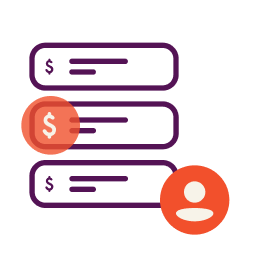Since the pandemic began in early 2020, there’s been a lot of talk about small business resiliency and business continuity. While we hope there’s no repeat soon of a pandemic, other disasters, whether they are economic or natural disasters, will occur at some point.
What does a resilient small business look like? How can small businesses build resilience? Here we explore ways to prepare your business for unknown challenges.
How Do Small Businesses Build Resilience?
Writing in the Harvard Business Review, researchers identified several factors that appear to have contributed to small business owners’ success navigating the rapid change in the business environment during the past couple of years. Understanding these factors can help other entrepreneurs prepare for what’s next.
The report, Lessons on Resilience for Small and Midsize Businesses, included these recommendations for building a resilient small business:
Make sure you have access to capital. Businesses with stronger financial cushions are able to invest in new products or technology to pivot to the next opportunity. While cash in the bank isn’t the only option here; having access to small business financing can also be helpful.
Take advantage of digital tools. Accelerated digitization allowed businesses to meet with clients by video call, for example, or to take and fulfill orders through technology such as apps. One interesting finding from the survey was that those businesses that were successful with a digital strategy didn’t wait until the pandemic to get started. They already had a head start.
Adapting flexible and/or remote work options. Many workers discovered they enjoyed working from home or another remote location, and they don’t want to go back to a full-time 9-5 office environment. Small businesses that can offer remote or flexible work will have an advantage over more rigid employers and may be less likely to experience labor shortages. Some employers are finding great success with a 4-day workweek.
Balance stability with agility. That means continuing to build a profitable business while also fostering innovation so if you need to tweak or change your business model, you can. This isn’t something you can create overnight, but innovation should always be a focus.
Other things you can do to help maintain business resilience:
Review and update your business plan. Update your financial projections based on today’s business environment and consider new markets or products to improve resilience.
Review your supply chain. If you can’t get the products you need to make your product, your business will be in trouble. Tools such as Supplier Check Reports can help you understand the risk of supply chain disruptions.
Invest in your online presence. You don’t have to have an ecommerce business, but small businesses that have a way to connect with a broader audience online did better during the Covid-19 crisis than those who didn’t. That may mean focusing on building a social media presence on one or more platforms, or building an email list and emailing your customers regularly. Not only can it help you find new customers, you may also deepen loyalty with your existing customers.
Connect with the small business community. Entrepreneurship can be lonely. Solopreneurs in particular may feel very isolated at times. Connecting with other business owners inside or outside your local business community or industry can provide valuable connections and insights.
Get a business mentor. The U.S. Small Business Administration offers free mentoring and technical assistance to small businesses through Small Business Development Centers (SBDC) and SCORE. Find local resources here.
How is your Small Business Financial Health?
Just as health became top of mind during the pandemic, small businesses also realized the need for staying financially healthy to survive the downturn.
Here are several measures of small business health:
Revenues
Sales are how businesses make money, and you should be monitoring them on a regular basis. Ask yourself, are business revenues increasing or decreasing? How dependent is your business on certain clients? What happens if one of your major clients stops doing business with you?
Financials
Your business financials can give you important insights into your business financial health. If you aren’t already doing so, you should consider reviewing the following financial statements on a regular basis:
- Profit and loss statement/income statement
- Balance sheet
- Cash flow statement
An A/R aging report will alert you to how long it takes to get paid by your customers. If you have slow-paying customers, what can you do to encourage faster payment?
If you don’t have a background in accounting this can sound intimidating, but your accounting professional can help. The SBA resource partners we mentioned earlier may also offer assistance or classes to help you become more fluent with your financials.
Credit
Your credit reports indicate how well you or your business has handled previous and current financial obligations. Lenders often check personal credit scores and/or business credit scores or reports to help them understand how healthy the business is. Make sure you review yours.
If you’re carrying debt you’ll also want to understand your Debt Service Coverage Ratio (DSCR) which can impact whether you qualify for financing.
Check Your Financial Hygiene
There are other measures of whether your business is taking care of its basic health.
- Do you have a business bank account and do you use it only for business revenues and expenses?
- Are you using a business credit card (rather than a personal credit card) for business expenses?
- Do you keep your business bookkeeping up to date?
- Do you have a relationship with an accounting professional to help you prepare or understand financial statements?
As you learn to develop financial muscle, you’ll feel more confident making decisions going forward.
Small Business Financing in Good Times
The adage, “Repair the roof when the sun is shining,” applies to small business financing. It’s much easier to qualify for small business loans and lines of credit when your business is doing well. If your business is doing well, you may want to consider:
Get a line of credit. This will make funds available to you when you need them. With a line of credit, you’ll only pay interest on the outstanding balance, making it a flexible form of financing.
Lease equipment. Upgrading your equipment or getting new equipment can be a smart move when the business is growing. Leasing or financing equipment won’t require you to deplete cash, and can provide you with more recent technology.
Get a business credit card. Many small business credit card issuers are offering enticing rewards and even 0% intro rates to get small business owners to use their cards over other ones in their wallets. (There aren’t a lot of startup small business loans, and business credit cards can be a useful alternative.)
Small Business Financing with Good Credit
Good personal credit scores, and/or good business credit, don’t guarantee you’ll be approved, but they can certainly help. Traditional lenders such as banks often check personal credit, and some online lenders do as well.
Interest rates are expected to continue to rise throughout 2022 so you may want to take advantage of your good credit to help you secure financing now.
Get a term loan. Getting a term-loan with a fixed interest rate could be a good option to lock in current interest rates.
Refinance debt. If your business metrics have been improving, you may want to refinance higher-rate or variable-rate debt with a fixed-rate loan.
Small Business Financing in Bad times
Small business financing tends to become more difficult to secure when there is an economic downturn. When the first coronavirus lockdowns happened, for example, many lenders stopped making new loans since they were uncertain about the future.
Some lenders will continue to make loans during tough economic times, but rates may be higher, and loan amounts or credit limits may be smaller.
Small Business Financing with Bad Credit
Bad credit is not an issue for all types of business financing as some are much more dependent on business revenues than on credit scores. If your business is making money and doesn’t have excessive debt, you may still have options. However, costs will likely be higher.
Merchant cash advances. This type of financing advances funds based on past sales, usually on credit or debit cards but sometimes other types of revenues. A percentage of future sales then goes to pay back the advance.
Invoice factoring. B2B businesses with clients who take some time to pay may be able to get funds more quickly with factoring.
Explore Small Business Financing Options
Lining up small business financing before you need it can be a smart move. Being proactive can help you save money and get better financing. Understand your qualifications to find the financing you need for free with Nav.
This article was originally written on October 7, 2022 and updated on October 26, 2022.



Have at it! We'd love to hear from you and encourage a lively discussion among our users. Please help us keep our site clean and protect yourself. Refrain from posting overtly promotional content, and avoid disclosing personal information such as bank account or phone numbers.
Reviews Disclosure: The responses below are not provided or commissioned by the credit card, financing and service companies that appear on this site. Responses have not been reviewed, approved or otherwise endorsed by the credit card, financing and service companies and it is not their responsibility to ensure all posts and/or questions are answered.